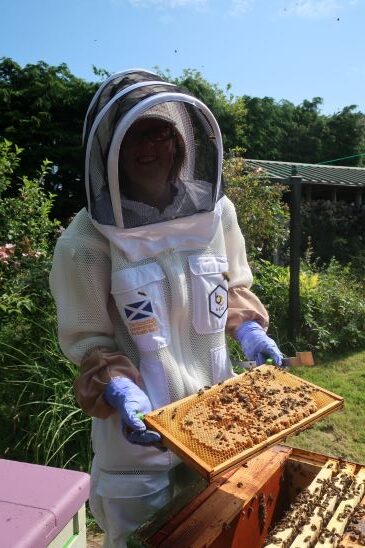
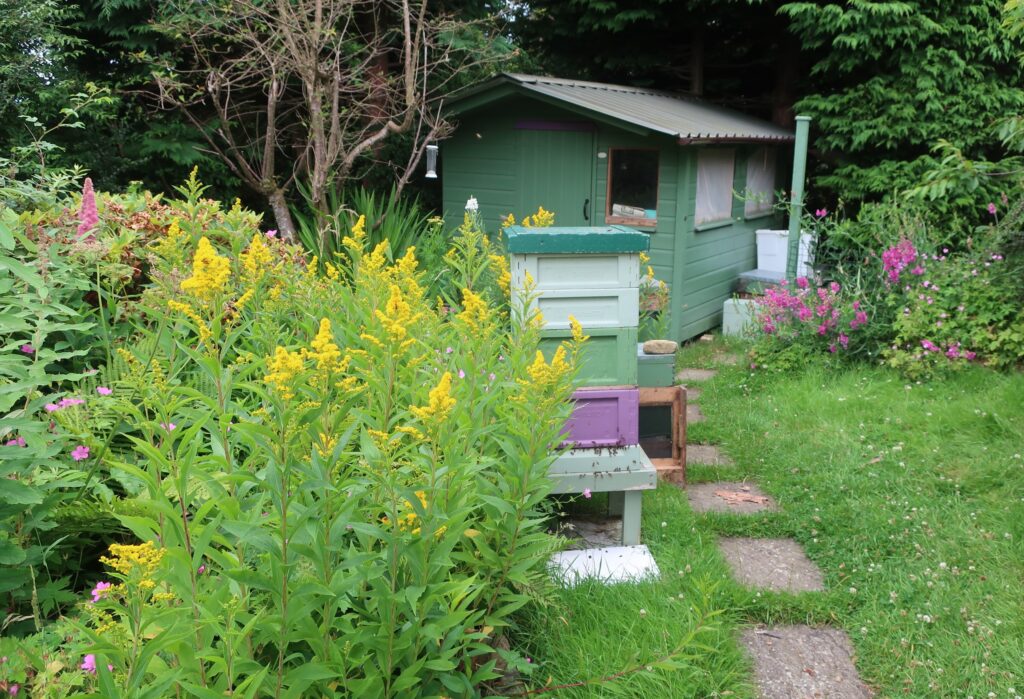
I’m writing on the last day of July after a week of lovely warm sunny weather when the temperatures hit the highs of the low twenties (degrees Celsius). The goldenrod is in full bloom and heavily scented. It’s heaving with pollinators but most of the colonies are down at the river working Himalayan balsam, or across the river on phacelia. The pollen palettes are glorious this season.
It’s been one of the best weeks so far finding laying queens in all colonies, except a supersedure in a nuc box. I’ll wait patiently for another week or so for the queen to get mated before I look again. The original queen was 4 years old; she was the one that survived the observation hive ordeal and subsequent “resuscitation”. I’m excited to keep her line going as she was special. Probably not many beekeepers have warmed a queen on a hot water bottle! https://www.beelistener.co.uk/observation-hive/thermoregulation-and-a-chilling-tale/
Boiling Frames in Soda Crystals.
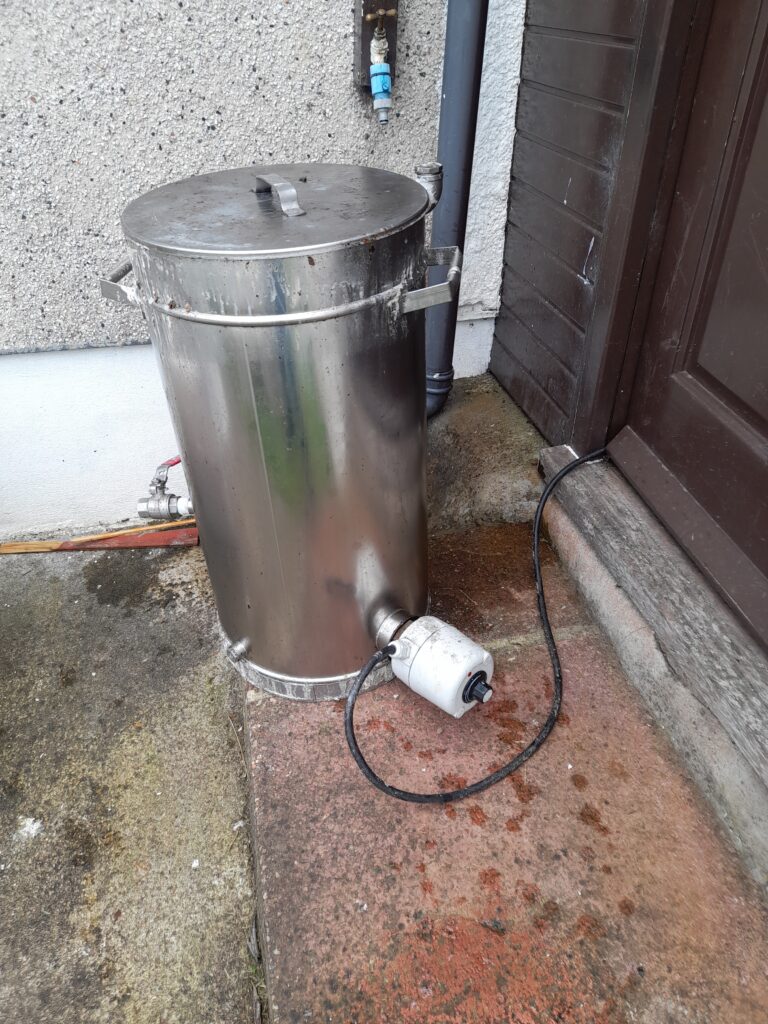
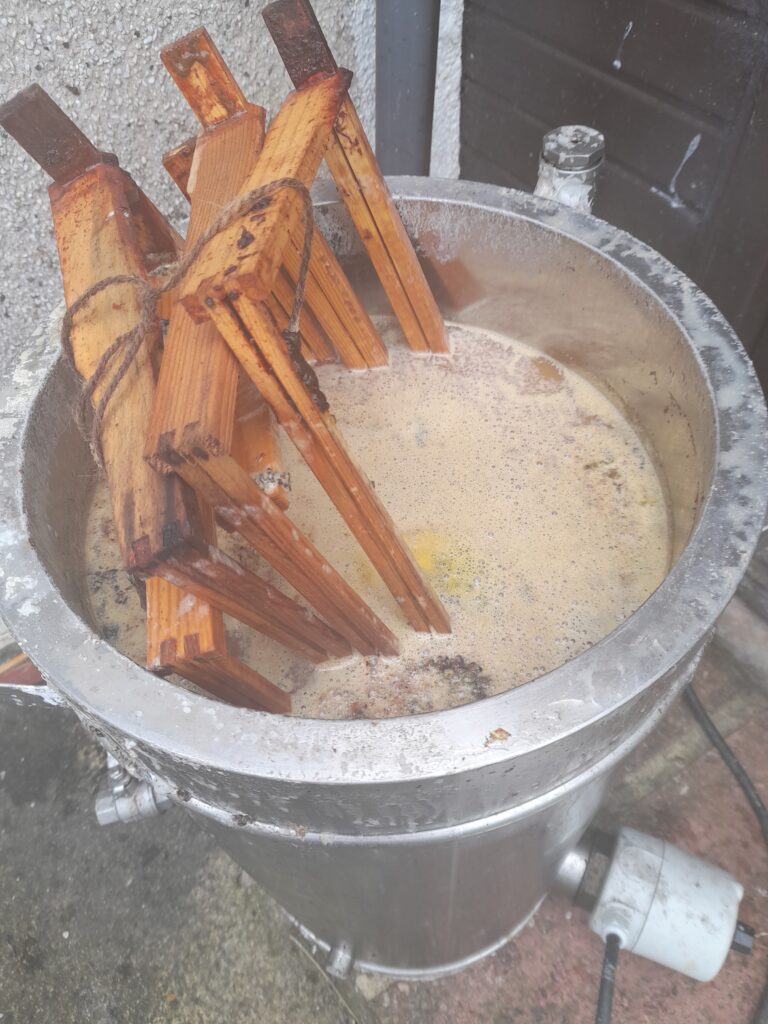
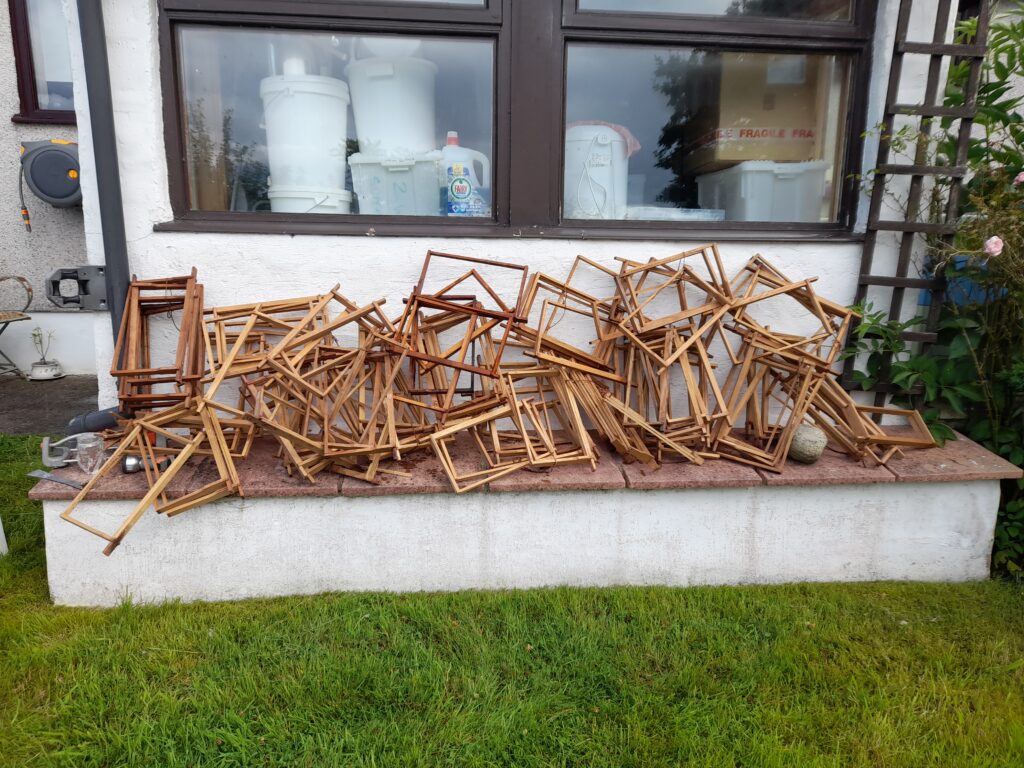
A good friend lent me a wax melter that you can also boil up frames in so that they are safe to reuse and I spent 8 hours one day on the job. A good tip is not to let old frames build up for years in storage boxes like I’ve just done!!! You can get the instructions for safely sanitising frames here on this excellent blog; https://www.northumbrianbees.co.uk/hive-frame-sterilisation/
The Bee Inspector.
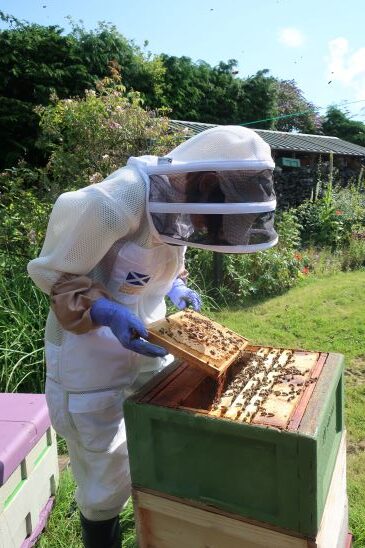
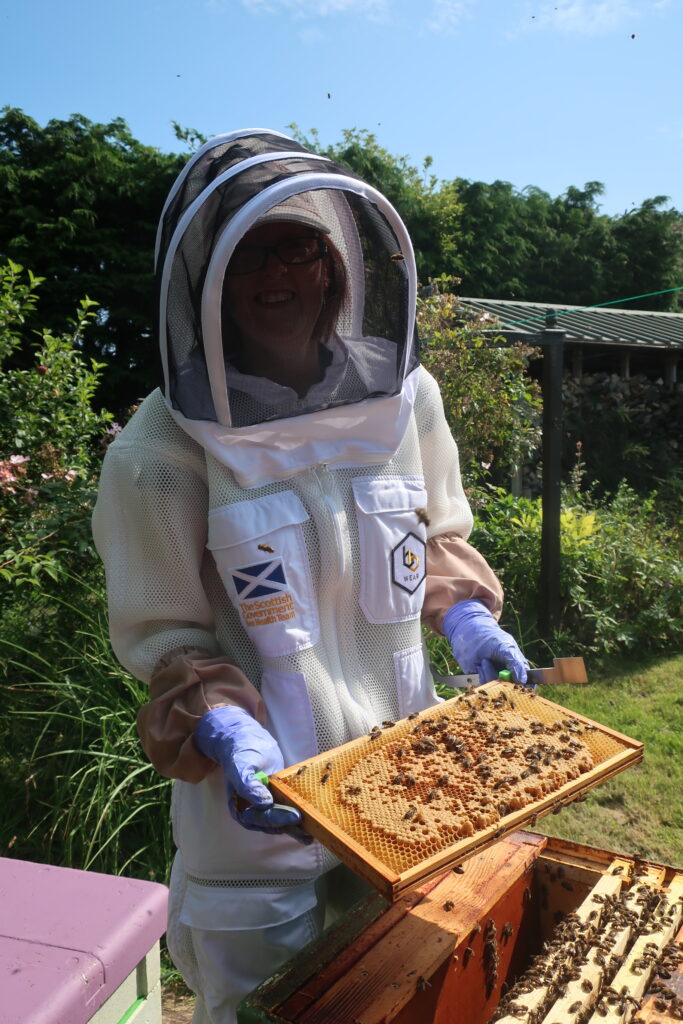
Fashion Shoot.
The highlight was a visit from our lovely Lead Bee Inspector Claire Gill. Bee-buddy Cynthia came to help me lift and place boxes so Claire had quick access to the brood boxes and it worked really well. The atmosphere was relaxed though the job in hand serious. We had time for a photo shoot since Cynthia was keen to review our new leather beekeeping boots from Bareback Boots and send in a photo. The are so comfortable, and after a hot day of beekeeping in wellies they are a dream. https://www.barebackfootwear.com/products/quebec-waterproof-brown
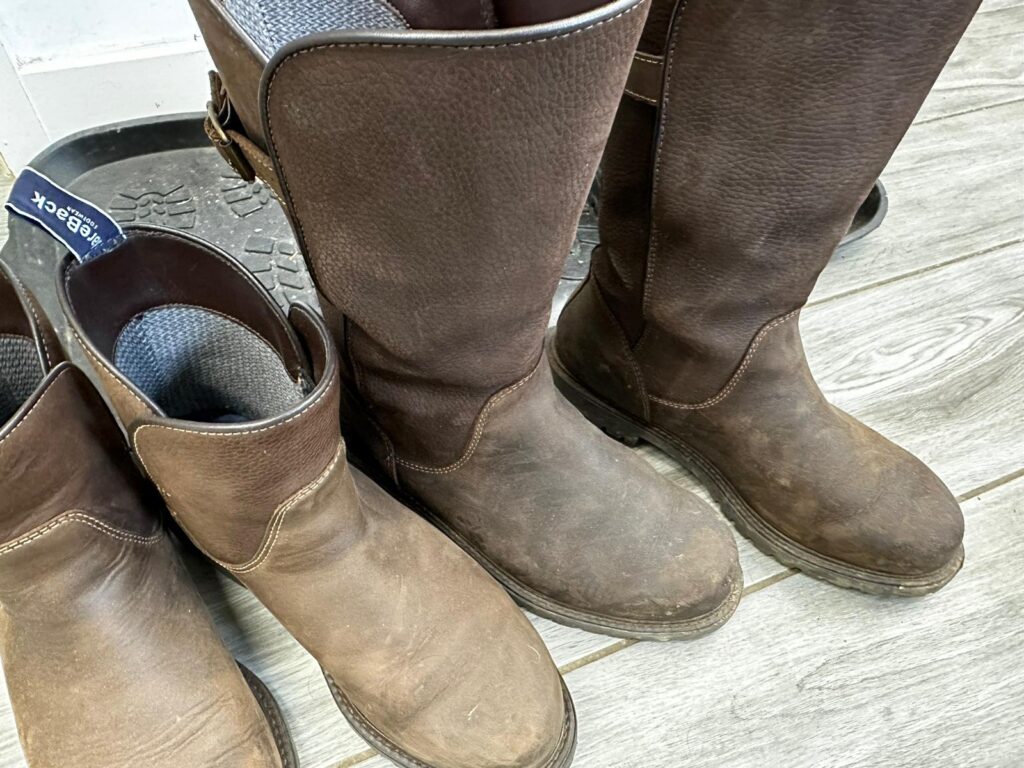
Claire is wearing an Asian hornet-proof bee suit by BBWear . https://www.bbwear.co.uk/shop/clothing/bee-suits/ultra-bee-suit She says it’s great when there’s a breeze blowing through the mesh. It was a hot still day for us and we were all pretty hot so a cuppa later was much needed. I’m wearing a pink lightweight suit by BBWear but they are discontinued now. The only downside of it is that the sparks from the smoker burn holes in it so I’ve had to patch it a few times.
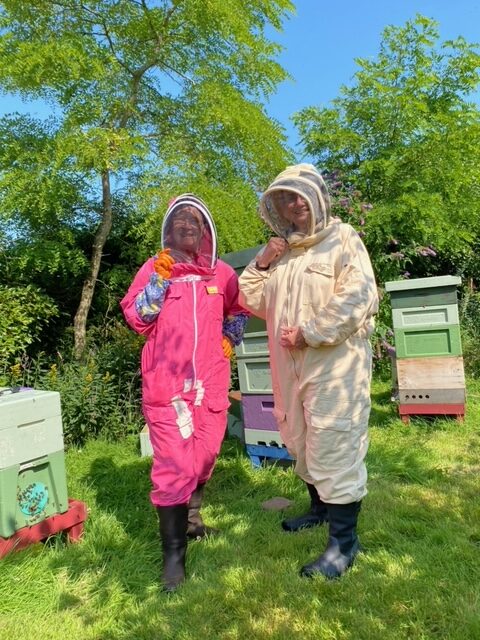
A couple of years ago, Claire visited Cynthia’s bees at the nearby distillery . https://www.beelistener.co.uk/diseases/sacbrood-virus-calling-the-inspector/ I’ve had three bee inspector visits in the past so I know what to expect. There was an outbreak of AFB nearby about 15 years ago which involved 2 visits a year apart for me.
It is always very interesting and a good reminder of how to inspect thoroughly with the sun behind you so can see into every cell. Claire handles the bees calmly and gently and each colony settles down quickly after each brood frame has been taken out and shaken to get the bees off to give access to brood cells. A couple of larvae were lying in unusual poses and were removed and examined carefully but thankfully Claire decided that all was well.
European Foulbrood.
Of course, the foulbroods are a serious matter and reportable diseases. https://www.nationalbeeunit.com/assets/PDFs/3_Resources_for_beekeepers/Advisory_leaflets/Foulbrood_2017_Web_version.pdf Claire was checking for EFB in case I’d spread the disease down to the Spey Valley three years ago with bees I’d sold to an experienced beekeeper there. Last year, there was an outbreak in the Valley and all honey bee colonies within a 10 km radius of the first reported case of EFB were checked. The beekeeper who bought my bees was devasted to discover that hers were infected. She is really nice and called to tell me about it and that she was sure it hadn’t come from my apiary. My apiary biosecurity is pretty good, and I do perform dedicated disease inspections myself and was fairly confident that this was the case, but one can never be complacent.
Our Scottish Bee Inspectorate is efficient and thorough, and follows up and traces the source when reportable diseases such as AFB and EFB rear their ugly heads. So, as part of the investigations, my home apiary was scheduled for inspection this season. https://www.nationalbeeunit.com/assets/PDFs/3_Resources_for_beekeepers/Advisory_leaflets/Statutory_Procedures_Final_version.pdf
My apiary got the all clear but it’s like a medical test for a certain disease; you’re only clear on testing day and anything can happen after that.
The BBC World Service.
The BBC emailed to ask if I would answer a listener’s question and record the answer on Monday for the BBC World Service’s programme called Unexpected Elements that airs on a Friday. My answer will go out on Friday 9th August.
Is it possible to give an average of the number of plants visited by the bees in a standard jar of honey one can buy at the supermarket? On the face of it, it seemed like an easy enough one to deal with so I agreed. However, it is actually a complex question, or at least the answer is. The last 3 times I’ve been on radio, it’s been live and I thought it would be easier to do a recording, but in fact it was a real challenge and much harder to do. I spent most of Monday working to condense my message. I knew exactly what I wanted to say but was limited to 1.5 minutes. A big thanks to Jane, Cynthia, and Judy for helping me prepare that one.
New Beekeeper.
To round off a great week, I have just started mentoring a delightful new beekeeper called Louise. Louise wants to get some practical beekeeping under her belt this season before buying her own bees next year. We had a great day yesterday on hive inspections checking that new queens are laying, doing alcohol wash tests, and transferring a swarm into a new hive. Having an enthusiastic and competent young person around creates new energy in the apiary and I’m looking forward to more of it.
Lastly.
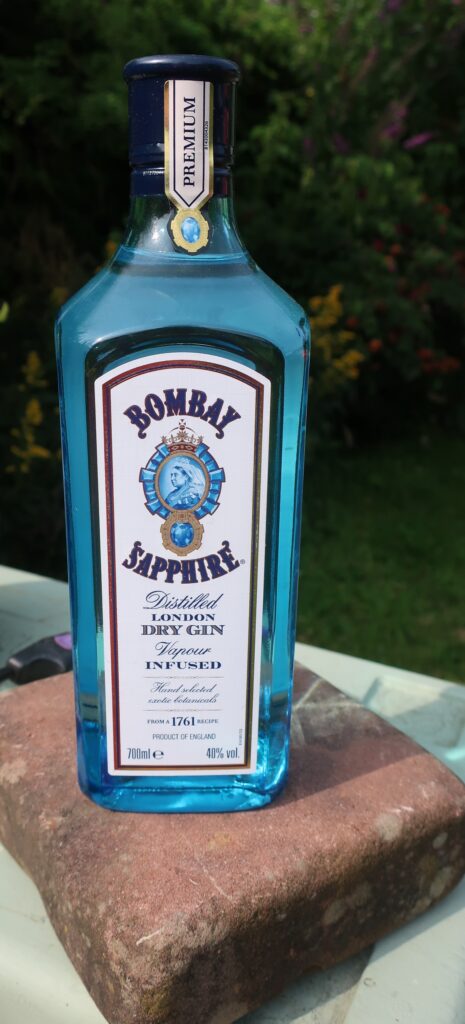
Another swarm at the distillery! Cynthia and I collected a smallish swarm of bees just outside the distillery office on Wednesday afternoon from a raised central island covered in gravel with low level shrubs. It involved me climbing up the low wall and working out the best way to collect the bees without destroying the miniature evergreen shrubs. The swarm consisted of several clumps of bees at ground level with one small clump connecting with the gravel.The rest were woven into the shrubs so I laid out a couple of frames with drawn foundation and they started to march onto them. Soon the frames were covered in bees. Cynthia was able to throw up all the tools as they were needed and we were rewarded with a bottle of fine gin each when the job was done. A lovely end to a busy day.

Thank you for including so many photos in your blogs. They really help us (your “listeners”) get a clear visual sense of your beekeeping endeavors. Good work on recycling your frames, and doing so in a way that makes them as new (wrt bee pathogens). Lovely example of Scottish thriftiness, methinks!
Hello Tom,
I’m glad you liked the photos this week. I was hoping that recycling frames was environmentally sound, but, given the electricity needed to boil them all, I am not so sure!